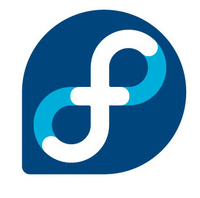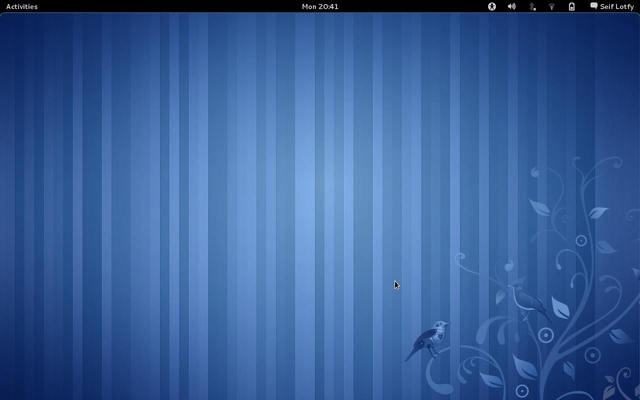From Ubuntu to Fedora - we land on foreign land (good, bad and ugly)
 Recently, I began to notice how difficult it is to develop a desktop environment that you do not use. And since most of my work now relates to GNOME (and KDE), I realized that I would have to use the new GNOME 3. Unfortunately, Ubuntu 11.04 with GNOME 3 is not very stable, in my opinion.
Recently, I began to notice how difficult it is to develop a desktop environment that you do not use. And since most of my work now relates to GNOME (and KDE), I realized that I would have to use the new GNOME 3. Unfortunately, Ubuntu 11.04 with GNOME 3 is not very stable, in my opinion.I am a very impatient developer: I really do not like to compile and deal with packages for a long time. When I used a virtual machine, I had to seriously tinker with Mutter , so I decided to switch to Fedora. This allowed me to take a fresh look at everything, since I have been using Ubuntu for a long time.
I did not turn my back on Ubuntu. I'm still developing some cool things for Natty (you can find them in our ppa), for example Zeitgeist Privacy Manager , using a Ubuntu virtual machine.
Let's not forget that Zeitgeist was developed using Ubuntu, its community, and that without the support of Ubuntu, it would be more difficult for the project to express itself fully. We are still using Launchpad and are not going to move. And of the 10 major developers of Zeitgeist, only three (including myself at the moment) do not use Ubuntu.
')
And yet…
I installed Fedora 15 into Ubuntu, which I have been using for six and a half years.
As many of you have probably heard, I am also going to collaborate with Collabora . I work a lot on Zeitgeist, in particular on the main parts of the project, as well as on preparing Zeitgeist for GNOME, KDE and Unity.
Working on GNOME Shell and projects such as Totem, Banshee, Rhythmbox, and gedit that need to integrate with Zeitgeist requires me to use GNOME 3 because of Gtk-3. But unfortunately, the current GNOME 3 of the PPA does not allow it to be used with Unity. If you want to use them side by side, you will have to wait 11.10.
And yet, what is it like to switch to Fedora?
Fedora benefits
GNOME 3
If you need the latest GNOME right out of the box, then Fedora is the best choice. Without connecting repositories. I do not compare GNOME 3 and Unity. I like both environments, but still my GNOME with Elementary did everything I needed and could give a head start on anything. Except for some interesting things in pure GNOME 3.

Everything works out of the box
Bluetooth, microphone, camera. As in Ubuntu, all hardware worked immediately after installation.
Lots of wiki and howto
Although they are good enough, you will not find such great sites like OMG! Ubuntu !, dedicated to Fedora. I think this is the thing that naturally appears when non-geeks like the distribution. Most Linux users who are not geeks and who are not forced to use Linux at work use Ubuntu because they need something simple and unusual at the same time.
RPM Fusion
RPM Fusion provides software that Fedora or Red Hat do not want to ship. Software is available as precompiled RPMs for all current versions of Fedora and Red Hat Enterprise Linux 5. You can use RPM Fusion repositories using tools such as yum and PackageKit. They have almost everything in the large Ubuntu repositories.
Work directly with upstream
From a developer’s point of view, you’ll have to work directly with upstream GNOME. Here, only two things worry me: bugzilla and git. Although Git is very cool, learning to work with it is quite difficult, and I have to constantly ask for help from more experienced users.
Fedora Disadvantages
No Application Centers and apt
I can not get rid of Yum, which is seriously lagging behind its competitors. I think this is what I dislike about Fedora the most. Instead of the Application Center, you have to use the PackageKit, which is no match for it.
Difficult environment for development in upstream
Developing upstream can be a terrible hemorrhoid. There is no centralized development platform for the Launchpad type, which leaves the Git + Wiki + Bugzilla combination far behind.
It is impossible to properly install Flash and proprietary codecs.
First you need to manually add the RPM Fusion repositories. This is how it was with me: I open the Totem MP3 file, he says that there are no codecs needed. When I click "Find Codecs", nothing is found. I had to add RPM Fusion turnips and install codecs manually. It is unlikely that any ordinary housewife will come to this.
In this aspect, Ubutnu is much easier to configure. Totem notices that there are no codecs, asks whether to install, and - voila. (The average user is NOT interested in proprietary codecs). The user will not throw out his collection of MP3 due to missing codecs.
Nothing like PPA
PPA makes it quite simple to get the latest versions of your favorite programs, leaving the core components of the OS stable. I know that Fedora has Koji, but PPA remains easier and more convenient to use.
Conclusion
I encourage those who have cojones to try something new and install Fedora 15. Although it is different from Ubuntu, it is for the better.
By the user
Fedora is the next great distribution after Ubuntu. If it were not for the absence of the Ubuntu community, the App Center and the non-annoying Yum, it would be a Ubuntu killer. Although Fedora has a community, it is not as large as Ubuntu.
With Fedora, you’ll get GNOME 3. No more GNOME 2. You’ll have to get used to GNOME 3, but after 2-3 days you don’t want to go back to the second version. Fedora is a stable distribution. For all the time of its use there was not a single fall or any other problems. A little googling and asking around from users, I installed everything I needed.
From the developer’s side
There is a shortage of the Ubuntu community and an environment like Launchpad, more friendly to new developers. In this case, you will not have problems in order to find any library or package in the Fedora repositories. A big plus is that all your patches are sent directly to the user. However, (maybe this is somehow related to the policy) for now I am not going to participate in the development of Fedora. At the moment I only know that in the near future I will use Fedora 15.
PS: I know that openSuSE uses GNOME 3 too, but at that time, when I was going to change the system, openSuSE did not yet support GNOME 3 out of the box.
Source: https://habr.com/ru/post/118906/
All Articles